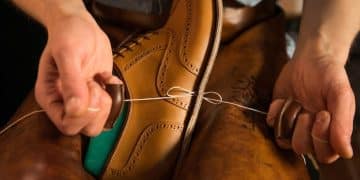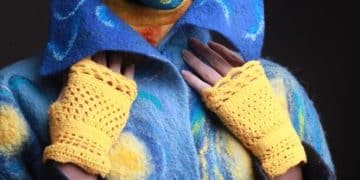Cosplay Footwear Guide: Modifying and Creating Accurate, Comfortable Shoes
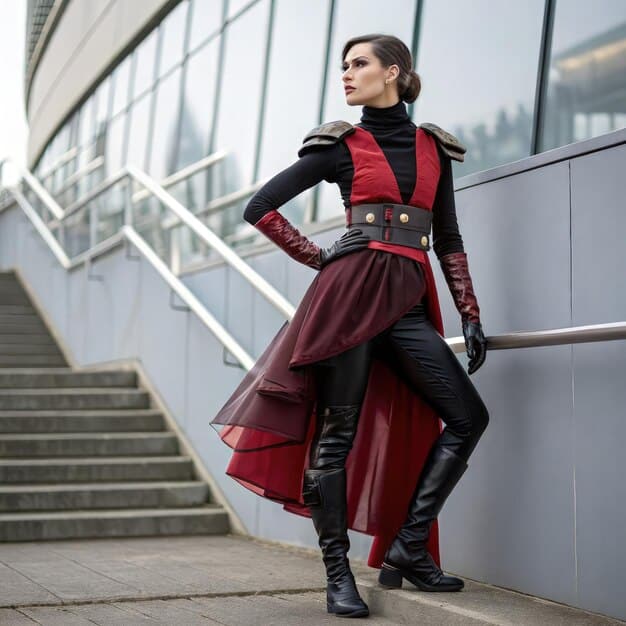
This cosplay footwear guide provides insights into modifying existing shoes and creating new ones to achieve both accuracy and comfort for cosplay, covering everything from material selection to construction techniques.
Creating the perfect cosplay often comes down to the details, and footwear is no exception. This Cosplay Footwear Guide: Modifying and Creating Comfortable and Accurate Shoes will walk you through the process of achieving the ideal look without sacrificing comfort.
Understanding the Importance of Accurate Cosplay Footwear
Cosplay isn’t just about wearing a costume; it’s about embodying a character. Accurate footwear plays a crucial role in completing the illusion and demonstrating your commitment to the craft. But accuracy shouldn’t come at the expense of comfort.
The right shoes can elevate your entire cosplay, making you feel more confident and in character. However, ill-fitting or uncomfortable shoes can lead to a miserable day at a convention. Finding the balance between aesthetics and practicality is key.
Why Footwear Matters
Footwear is often one of the first things people notice about a cosplay. It’s a grounding element that ties the entire look together. Ignoring this aspect can make even the most elaborate costume seem incomplete.
- Accuracy: Replicating the character’s footwear as closely as possible.
- Comfort: Ensuring you can wear the shoes for extended periods without discomfort.
- Durability: Creating or modifying shoes that can withstand the rigors of a convention.
Achieving this balance involves careful planning, material selection, and construction techniques. Let’s dive into how to make it happen.
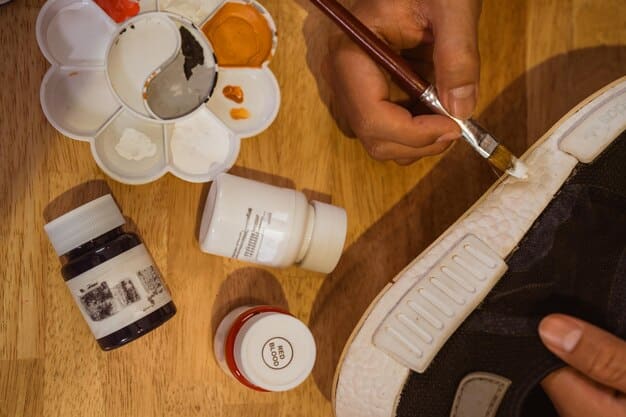
Ultimately, the goal is to create footwear that not only looks the part but also allows you to fully enjoy your cosplay experience. Attention to detail and a focus on comfort will ensure your cosplay stands out for all the right reasons.
Choosing the Right Base Shoes for Modification
Modifying existing shoes is often easier and more cost-effective than creating footwear from scratch. Selecting the right base shoe is a critical first step. Start by considering the shape, style, and material that best match your desired outcome.
Think about the character’s footwear and identify key characteristics. Are they boots, sandals, heels, or something more unique? Once you have a clear picture, you can begin your search for the perfect base.
Factors to Consider
When selecting base shoes, several factors come into play. Prioritize fit, material compatibility, and potential for modification to ensure a successful project.
- Fit: Choose shoes that fit comfortably and provide adequate support.
- Material: Consider materials that are easy to paint, glue, or otherwise modify. Faux leather, canvas, and sturdy synthetics often work well.
- Style: Look for shoes with a similar silhouette to your desired final product, minimizing extensive alterations.
Don’t be afraid to shop around and compare options. Thrift stores and online marketplaces can be excellent sources for affordable base shoes. Remember to factor in the cost of modifications when making your decision.
By spending time finding the right base shoes, you can streamline your modification process and achieve more accurate and comfortable cosplay footwear.
Essential Materials and Tools for Cosplay Footwear
Before you begin your footwear transformation, gather the essential materials and tools. Having the right supplies on hand will make the process smoother and help you achieve professional-looking results. The specific materials will depend on your design, but some basics are always useful.
From paints and fabrics to adhesives and shaping tools, equipping yourself properly is half the battle. Let’s explore some must-have supplies for your cosplay footwear project.
Materials Checklist
Stock up on key materials to ensure you’re prepared for any challenge. Consider durability, flexibility, and appearance as you make your choices.
- Paints: Acrylic paints are versatile and can be used on various materials. Choose colors that match your character’s footwear.
- Fabrics: Faux leather, vinyl, and stretch fabrics can be used for overlays or embellishments.
- Adhesives: Invest in strong glues like contact cement or epoxy for durable bonds.
Essential Tools
Having the right tools will make your modifications more precise and efficient. Here are a few must-haves for creating cosplay footwear:
- Cutting Tools: Sharp scissors, craft knives, and rotary cutters are essential for fabric and foam work.
- Sewing Supplies: Needles, thread, and a sewing machine (optional) will help with fabric attachments.
- Shaping Tools: Heat guns, foam rollers, and sanding blocks can help mold and shape materials.
With the right materials and tools, you’ll be well-equipped to tackle any cosplay footwear project. Careful preparation will lead to satisfying and professional results.
Modifying Existing Shoes for Cosplay Accuracy
Once you have your base shoes and materials, it’s time to start modifying. This section covers techniques for altering the appearance of your shoes to match your desired character’s footwear. This may involve painting, adding details, or reshaping certain areas.
Modifying existing shoes requires patience and attention to detail. Take your time and focus on achieving a clean, accurate finish.
Painting Techniques
Painting is a simple yet effective way to change the color and add details to your shoes. Proper preparation and technique are key to achieving a lasting finish.
- Clean the Shoes: Remove any dirt or debris from the shoe’s surface.
- Prime the Surface: Apply a primer to help the paint adhere better.
- Apply the Paint: Use thin, even coats of acrylic paint. Allow each coat to dry completely before applying the next.
Adding Details and Embellishments
Details can make all the difference in achieving an accurate cosplay. Consider adding straps, buckles, or other embellishments to match your character’s footwear.
- Straps and Buckles: Attach straps using glue or rivets for a secure hold.
- Overlays: Cut fabric or foam pieces to create overlays that add texture and dimension.
- Sculpting: Use polymer clay or foam to create custom details and attach them to the shoes.
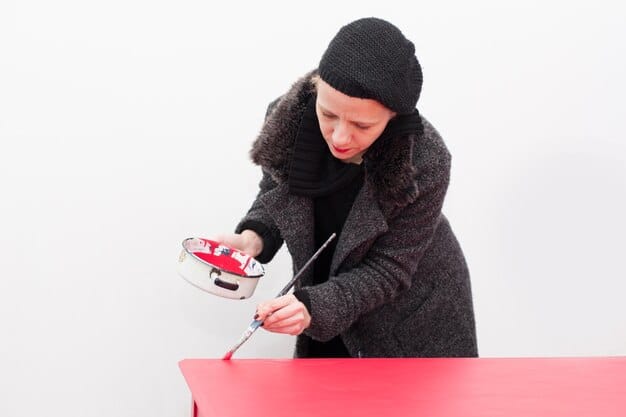
With careful planning and execution, you can transform ordinary shoes into accurate and eye-catching cosplay footwear. Remember to prioritize durability and comfort as you make your modifications.
Creating Cosplay Footwear from Scratch: A Step-by-Step Guide
For highly unique or complex footwear designs, creating shoes from scratch may be necessary. This process demands more time and skill but allows for complete customization. Start by creating a pattern and selecting materials for the upper, sole, and inner lining. Ensure you have a clear vision of the intended outcome.
This section provides a step-by-step guide to crafting cosplay footwear from the ground up. While challenging, this method offers unparalleled control over the final product.
Pattern Creation
Creating a pattern is the foundation of custom footwear. Start by tracing the outline of your foot onto paper, then add seam allowances and design details.
- Foot Tracing: Accurately trace the shape of your foot, including the heel and toes.
- Seam Allowances: Add extra space for seams and adjustments.
- Design Details: Incorporate design elements such as straps, buckles, or decorative panels.
Construction Techniques
Once you have your pattern, it’s time to begin construction. This involves cutting out the pattern pieces, assembling the upper, and attaching the sole.
- Cut the Pieces: Carefully cut out the pattern pieces from your chosen materials.
- Assemble the Upper: Sew or glue the upper pieces together, following your pattern instructions.
- Attach the Sole: Secure the sole to the upper using strong adhesives or stitching.
Creating footwear from scratch requires patience and precision. With practice and attention to detail, you can create stunning and unique cosplay shoes.
Ensuring Comfort in Your Cosplay Footwear
Accuracy is important, but comfort is essential, especially for long days at conventions. Prioritize footwear that allows you to walk, stand, and pose without discomfort. This can involve adding cushioning, arch support, or adjusting the fit.
This section focuses on techniques for maximizing comfort in your cosplay footwear. A comfortable cosplayer is a happy cosplayer!
Adding Cushioning and Support
Adding cushioning can make a world of difference. Consider adding insoles, gel pads, or foam padding to your shoes.
- Insoles: Choose supportive insoles that provide arch support and cushioning.
- Gel Pads: Place gel pads in areas that experience pressure, such as the balls of your feet.
- Foam Padding: Use foam padding to fill in gaps or provide extra cushioning.
Fit Adjustments
Make sure your shoes fit properly and don’t rub or pinch. Adjust straps, add padding, or stretch the shoes if necessary.
- Strap Adjustments: Adjust straps to ensure a snug but comfortable fit.
- Padding: Add padding to areas that rub or cause discomfort.
- Stretching: Use a shoe stretcher to gently widen or lengthen the shoes.
Comfortable cosplay footwear is achievable with the right modifications and adjustments. Invest the time to ensure your feet are happy, and you’ll be able to fully enjoy your cosplay experience.
| Key Point | Brief Description |
|---|---|
| ✅ Base Shoe Selection | Choose shoes that fit well and match the desired style. |
| 🎨 Painting Techniques | Use acrylic paints and primer for lasting coloration. |
| 🛡️ Comfort Adjustments | Add insoles & padding for extended wear comfort. |
| 🛠️ Creating from Scratch | Pattern creation, material selection, and construction. |
Frequently Asked Questions
▼
Acrylic paints are generally the best choice for cosplay shoes. They’re versatile, durable, and adhere well to various materials commonly used in shoe modifications. Remember to use a primer for better adhesion.
▼
Enhance comfort by adding supportive insoles, gel pads, or foam padding. Ensure the shoes fit correctly and don’t rub. Adjust straps or use a shoe stretcher to achieve a better fit.
▼
Consider using EVA foam, thermoplastic materials, or faux leather for creating shoe elements from scratch. EVA foam is lightweight and easy to shape, thermoplastic is moldable with heat, and faux leather provides a realistic look.
▼
Yes, many alternatives exist, like faux leather, vinyl, and various synthetic fabrics. These materials mimic the look of leather without the cost or ethical concerns. They are also often easier to work with during cosplay construction.
▼
Seal the paint with a clear acrylic sealant after the paint has fully dried. This protects the paint from scratches, chipping, and moisture, ensuring your cosplay shoes look great for longer.
Conclusion
Creating accurate and comfortable cosplay footwear is an art that combines creativity, craftsmanship, and attention to detail. Whether you’re modifying existing shoes or building them from scratch, the tips and techniques outlined in this guide will help you achieve footwear that not only looks fantastic but also allows you to enjoy your cosplay experience to the fullest.
